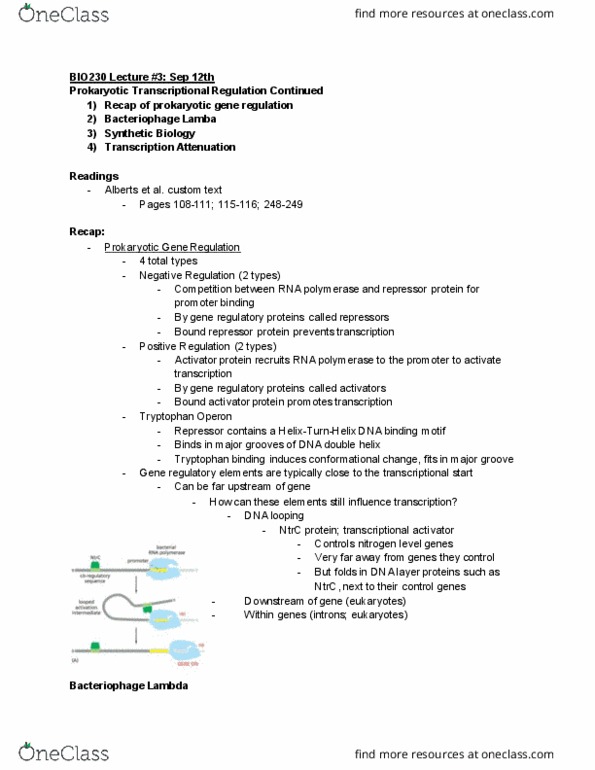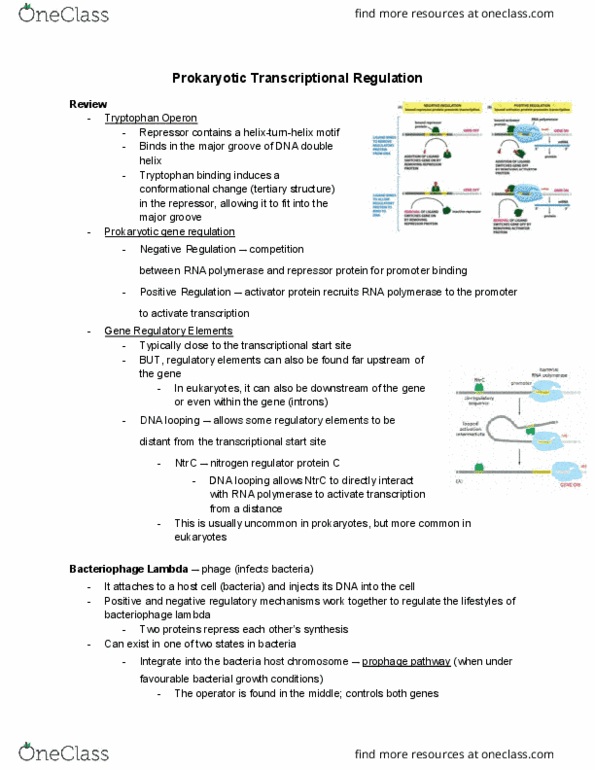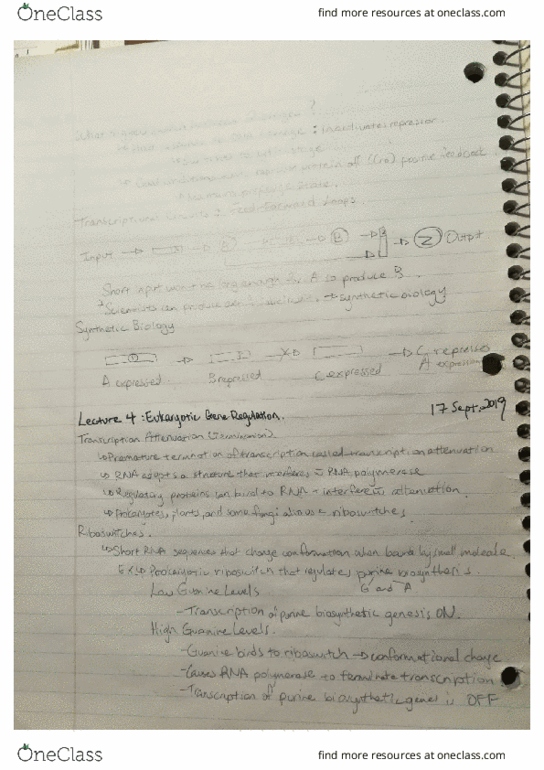BIO230H1 Lecture Notes - Lecture 4: Lambda Phage, Prophage, Repressor
BIO230H1 verified notes
4/27View all
Document Summary
Binds in the major groove of dna double helix. Tryptophan binding induces a conformational change (tertiary structure) in the repressor, allowing it to fit into the major groove. Negative regulation competition between rna polymerase and repressor protein for promoter binding. Positive regulation activator protein recruits rna polymerase to the promoter to activate transcription. Typically close to the transcriptional start site. But, regulatory elements can also be found far upstream of the gene. In eukaryotes, it can also be downstream of the gene or even within the gene (introns) Dna looping allows some regulatory elements to be distant from the transcriptional start site. Dna looping allows ntrc to directly interact with rna polymerase to activate transcription from a distance. This is usually uncommon in prokaryotes, but more common in eukaryotes. It attaches to a host cell (bacteria) and injects its dna into the cell. Positive and negative regulatory mechanisms work together to regulate the lifestyles of bacteriophage lambda.





